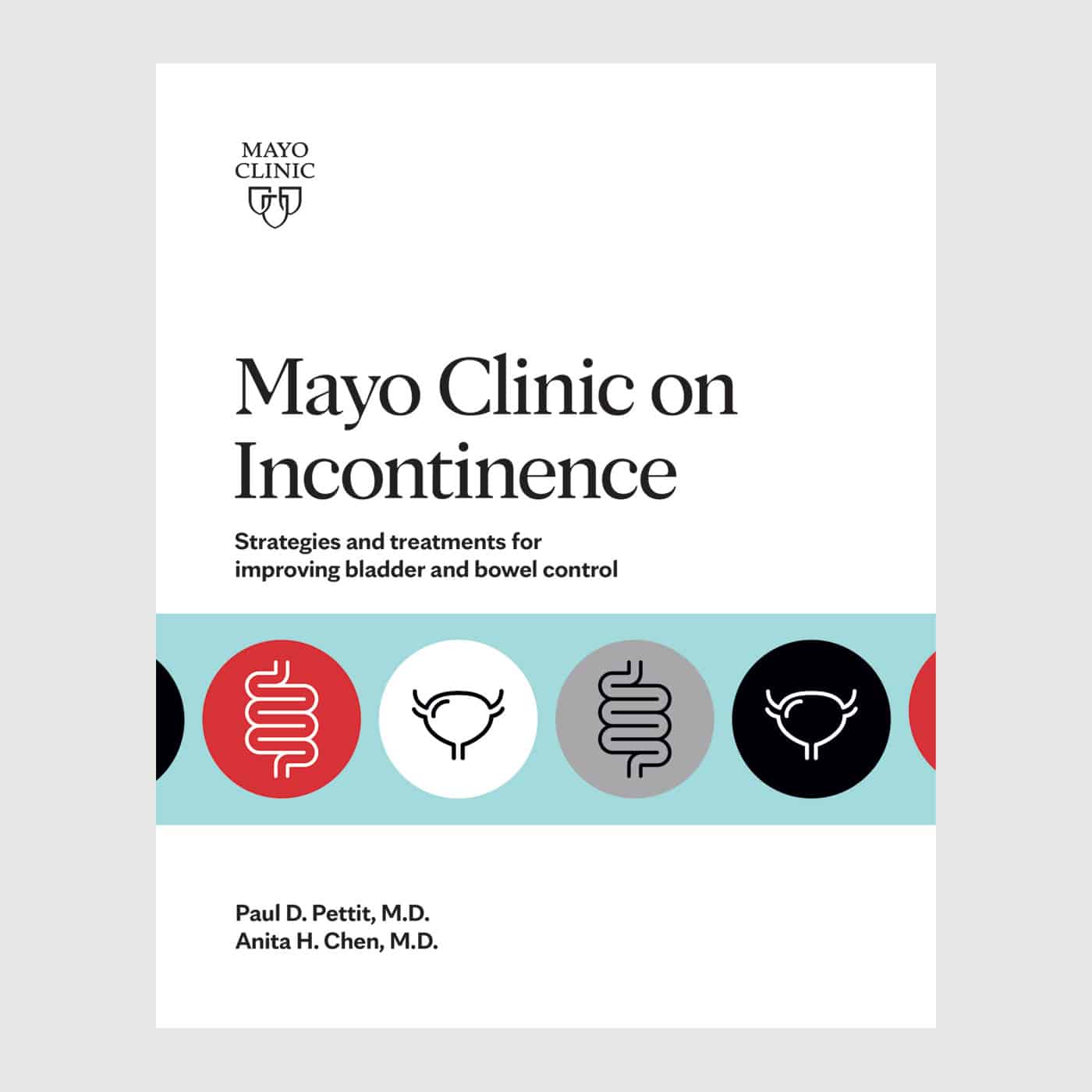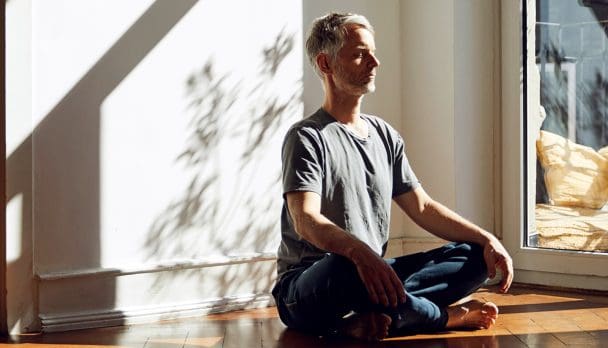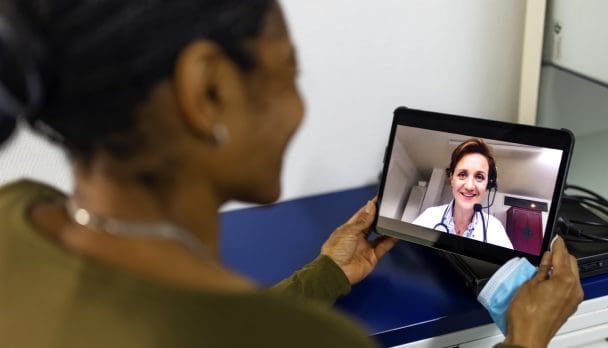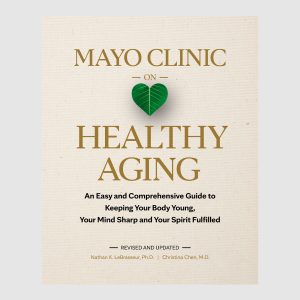Space: the final medical frontier. This is the interview with Dr. Jan Stepanek. His continuing mission: to explore strange new medicine; to seek out new treatment and new conditions; to boldly treat where no doctor has treated before.
Or in other words, on this episode of Health Matters, we talk with aerospace medicine specialist Dr. Jan Stepanek about what medicine looks like in outer space. Buckle up, strap yourself in, and let’s go the stars!
Want to learn more about aerospace medicine? Check out Life at High G-Force and Spacecare available from Mayo Clinic Press.
Find us online at Mayo Clinic Press for more health and wellness articles, podcasts and books. Do you have feedback, questions or topic suggestions? Email us at mcppodcasts@mayo.edu.
Read the transcript:
Kristen Meinzer: This is “Health Matters,” a podcast from Mayo Clinic where we discuss the latest medical advice, news, and research to help you live a happier and healthier life. My name is Kristen Meinzer. I’m a writer and journalist, and in this episode we’re talking about space medicine.
Now, I am a bit of a space nut and there are so many space movies that I absolutely love, and one thing I can’t help but notice is in a lot of these movies, there are scenes of a medical nature. For example, in the Martian, Matt Damon, his character literally performed surgery on himself in space, and I’m curious. Do you watch any of these movies, and what is your takeaway when you watch them?
Dr. Jan Stepanek: Well, the reality of things happening in space is true, the same way that we could get hurt on a planet, that could happen in space. It gets to be a little bit of a different story because you’re in a much more resource constrained environment.
Luckily, we’ve never had a situation where that was necessarily to the same extent done as depicted in the movie, but if you have, for instance, a foreign body that gets into the eye or you were to get a mild injury, those are things that are going to be done either on themselves or someone will try to help and assist you.
But if someone needs further intervention, such as a diagnostic ultrasound, they can do that with guidance from the ground or potentially with additional guidance from a system on board, or they can do it on each other. Medical procedures such as blood draws or samples that are necessary for science, that is something that people either draw on themselves or they draw on each other. That’s par for the course.
Kristen Meinzer: It’s like telemedicine, but in space.Space: the final medical frontier. Our continuing mission: to explore strange new stressors; to seek out new treatment and new conditions; to boldly go where no medicine has gone before. When you hear “space medicine,” you might start to picture the medical bay on Star Trek. But real-life aerospace medicine deals with less glamorous challenges – the effects of microgravity, extreme G-forces, cosmic radiation, and limited oxygen, to name a few. All that on top of treating more common ailments in a totally new environment, where things float!
Going to space pushes the limits of our bodies. That drives new discoveries, and new technology. These discoveries may be putting us closer to a mission to Mars, but they also have surprising impacts on us Earthlings as well.
In this episode, we welcome Dr. Jan Stepanek, a board-certified internal medicine and aerospace medicine specialist with Mayo Clinic. He’s here to answer all our questions about space medicine. So buckle up, strap in, and let’s go to the stars!
Kristen Meinzer: Dr. Stepanek, thank you so much for joining us today. We’re so excited to have you on the show.
Dr. Jan Stepanek: Thanks for having me. Okay.
Kristen Meinzer: First and foremost, what exactly is aerospace medicine?
Dr. Jan Stepanek: When people ask me and they know that I practice aerospace medicine, I frequently get this first, “Oh, that is so cool what you do?” Then there’s a pregnant pause and people ask, “What is it that you actually do?” Aerospace medicine is actually a board certified specialty.
It covers the effects of unusual environments that patients and people that are engaged in that domain turn out to be exposed to. That can be low barometric pressure, all the way down to the vacuum of space. It can be altitudes, it can be changes in the inhaled atmosphere, so alterations in inhaled carbon dioxide levels, can pertain to radiation, G-forces, then also the aspects of deconditioning of the human body when we are not under the influence of gravity and all the aspects that pertain to spaceflight.
It also pertains to pedestrian things that all of us are familiar with, and that is individuals, that we all know may travel and enjoy skiing and go to altitude and feel very poorly, and some of them never adapt well. That is a common domain area where people who have expertise in aerospace medicine can be of assistance.
Kristen Meinzer: Now, does the job require that you go to space? Have you yourself been to space?
Dr. Jan Stepanek: I have not been to space. The job does not require going to space and most people who practice aerospace medicine never will get the privilege to go to space. There are a select few mission specialists who would turn out to have medical degrees. People, including trainees that I had the pleasure of being engaged in their training with, such as Kjell Lindgren or Serena Aunon, they became astronauts and they were physician astronauts.
Dr. Jan Stepanek: They were able to carry out a sort of double duty. They were able to do science. But also, at the same token, be of service to crew members as sort of the medical mission specialists.
Kristen Meinzer: Who else is going to work with the crews or to help the crews in the event of an emergency or just to monitor their health?
Dr. Jan Stepanek: There are really multiple participants and it’s not uncommon that you have, yes, someone who happens to be floating in space, but there is an army of people that are supporting them. There is a large group of people that are monitoring the health, both of the system, the spacecraft and the individuals from the ground up.
That’s individuals in mission control and there turn out to be also physicians, flight surgeons that are especially trained and familiar with the impact of space onto a given astronaut’s health, and on board the spacecraft, there is typically a commander or maybe a mission specialist.
If there is a medical mission specialist, that is frequently either a physician or someone who’s had additional training with regards to health related matters, that really depends on the mission.
Kristen Meinzer: Now doctor, you said you help prepare people to go to space. What is the extent of what you do as a space doctor?
Dr. Jan Stepanek: Most of the work that I do is clinical aerospace medicine. I’m engaged in helping when someone, for instance, has medical pre-existing conditions, and they’re trying to fly to space. Or they have flown to space and there is a vexing clinical problem that has arisen, and we’re trying to investigate what has happened. Why has it happened?
We do work with commercial space flight participants, so those are basically space flight participants who are not governmental astronauts and we work with them primarily in medical assessment and medical evaluation, but I do not participate in the mission control scenarios. I’m not sitting on the console. Those are governmentally trained flight doctors from NASA.
Kristen Meinzer: In Earth medicine, we generally deal with the body behaving abnormally, but in normal environments it’s the opposite. Bodies that are healthy, but in totally abnormal environments. The biggest abnormality of space is microgravity – the technical term for what most of us call zero gravity. What happens to the human body in a microgravity environment?
Dr. Jan Stepanek: A lot of the things that we notice when our body is going to microgravity are actually adaptive responses. You know, it’s not necessarily an illness, but rather our bodies trying diligently to do what they’re best at in order to serve us better in that environment. Sometimes that comes hand in hand with a little bit of transient discomfort and adaptations that may not leave us well suited down the road to perform as well as we potentially could.
Microgravity, when we’re on the ground here on planet Earth, we’re under constant need to exert force and effort against Earth’s gravity, 1G. That force is born by our anti gravity muscles, our big muscle groups that keep us and give us the opportunity to actually rise from a chair and stay upright. As soon as you’re in space, those big antigravity muscles are kind of out of a job because you do not need to fight gravity anymore, so they will have the propensity to atrophy.
You have just changed from a human being that is used to walking and using your legs for locomotion and that now changes in space because now your legs are really steering a little bit and maybe hang on to something when you need to do something with your hands. But most of your locomotion is actually going to be with your hands because you’re going to be moving through the space station by holding on to something and propelling yourself forward.
That gets to be okay as long as you’re just floating in space, but if you’re traveling to a distant, let’s say Mars or to a lunar mission, and then there’s an expectation that now you’re going to be using your musculoskeletal apparatus to do work, then those muscles need to stay conditioned. There is muscle loss and part two, your skeleton.
If it turns out that there is no more gravity, there is not going to be as much need for that much bone. There’s going to be resorption of that bone. That is an appropriate response to the environment, but if you lose a lot of bone, and if there is an expectation that you return to Earth, or you’re going to Mars, where you’re going to have a fractional gravity, then it’s going to be a problem.
You’ll have things such as a sense of lengthening of the spine, which is real because the discs between our vertebral bodies will become juicier, which means that we all get to grow a little bit when we go into space. But that can cause some transient back pain and discomfort.
There’s also fluid shifts that will occur upon acute entry to microgravity that will cause transient symptoms.
That then means that we get congestion. This is lovingly referred to as puffy face, chicken leg syndrome. No, not a medical term. That’s a description of how people look. It really does feel like you have congestion like people can sometimes have when they have allergies or they have a sinus congestion, it can result in a mild headache sometimes. It can dull the sense of taste and it can also dull the sense of smell a little bit because of the tissue swelling up.
It will result in changes in your cardiac outputs. There’s going to be less work needing to be done by the heart to pump blood, because there is no need to be defending it against the hydrostatic forces in 1G. When you get back to Earth from being in space for a long time, dizziness and near passing out can be a problem.
But it also has some impact on how blood flow works in our body. On Earth, we usually think of blood clots occurring typically in our lower extremities, and it rarely so happens in the upper extremities. We thought that space was sort of an exception, and we didn’t see blood clots until we saw them.
They turn out to occur actually in the veins at the level of the neck. That occurred in a female astronaut here a couple of years back. It was a surprise, but kind of makes sense because this is now the area where there is a little bit more sluggish flow of venous blood, because there’s no more gravity, so it’s not the lower extremities, but it’s actually the areas that drain the brain. That sluggish blood flow can result in blood clot formation. If it does happen, the treatment would be a little bit akin to what you would be treated for if you were to have a blood clot, for instance, traveling on an airplane.
Last, but not least, there are neuro vestibular alterations. That means that we have the need for the body to adapt to how the brain, notably the eyes, our visual sense, and our inner ear work together and readapt. That is very, very closely synced when we’re in gravity because we have gravity sensors in our inner ear and that syncs beautifully with the eyes. Once you get to space, the eyes function the way that they’re supposed to, but now the gravity sensors are out of sync because they’re not sensing gravity. That can get space motion sickness when people basically don’t feel so great for the first 3 days when they’re in space. But then we adjust.
Kristen Meinzer: I’m somebody who tends to get quite motion sick on boats and in cars, so I would probably be a mess in space as well.
Dr. Jan Stepanek: Yeah, I’m right there with you. If I could stay on firm ground, I’ll be happier as opposed to on a boat and probably also in space.
Kristen Meinzer: Now, knowing all of this that can go wrong, how do astronauts prepare and condition their bodies for this environment that they’re going to enter?
Dr. Jan Stepanek: The things that you can do prior to going to space is to make sure that you’re healthy or that you don’t have conditions that could potentially be a problem, depending on the type of mission that you’re going on. Then very importantly make sure that you are from a overall aerobic and resistive fitness or fit individual, because you’re going to be having to defend your fitness when you’re in space for a long period of time by 60 minutes of resistive training on a daily basis, plus 30 minutes on a treadmill, just to make sure that you don’t lose ground.
If you start out and you were to get up there and you would not be fit to begin with, that would be a bad start to the journey. Outside of that, it’s really certain things that are behavioral in nature. For instance, for space motion sickness, when people first get to space, they try to avoid rapid head turning motions that could potentially aggravate that conflict. This notion of getting to space and immediately doing a somersault is not a great idea.
An aerospace medicine specialist primarily assesses and approves patients for space flight, and treats them upon return. Which is important because space does weird things to the human body – our antigravity muscles atrophy, our bone density drops, our spines lengthen, and our hearts get a little lazy. Some of these changes cause discomfort while we’re in space, some cause problems once we get back to Earth.
But not everything that goes wrong in space is caused by space. Sometimes astronauts have to deal with extremely ordinary problems while floating around their extraordinary environment.
Kristen Meinzer: All right. Once we get adjusted to space, motion sickness, and so on, we’re doing mostly okay. But let’s say an accident happens. For example, I cut my finger and I started bleeding. Clearly liquids don’t just stay in place in space, right? How do people in space treat these kinds of accidents, do they have special tools, are there special methods that they have to enlist?
Dr. Jan Stepanek: That really depends a little bit on the type and the magnitude of the injury. The thing that is reassuring is that a small cut on a finger is going to deserve the same Band Aid that it deserves on Earth. Now, the liquid, if you were to not put the Band Aid on and there is a fair amount of bleeding, it will behave differently. It’s not just going to detach from the finger, but due to surface tension, it will cover and stick to the surface of where it is bleeding from.
It will create a sort of bubble that adheres to, and unless you have arterial bleeding, where it will be propelled into the space station’s volume, it would just really stick to the place. It’s actually reasonably easy to clean up that way.
But if you had a larger injury. Then, yes, immediately you have to be mindful of not contaminating the vehicle. Contaminants have a pesky way of just staying airborne much, much longer until they’re propelled with some of the ventilation system into the filters.
That is no different, from the contamination that can occur for other reasons, but with bleeding and with biological fluids, that is an important thing to pay attention to.
Kristen Meinzer: One system of the body that I imagine must be very important to take care of and possibly very complicated to take care of is the respiratory system in space. What we’re breathing, how clean the air is, what contaminants are in there, the appropriate mixture of oxygen to other things.
Dr. Jan Stepanek: The good news is that the lungs are working very well in space. The one thing that is a little bit challenging, because things free float more easily due to the lack of gravity, is the ability to potentially inhale and have a foreign body inhalation, that gets to be a bigger issue once we start dealing with things such as dust like on Mars.
We try to avoid any contaminants of the atmosphere. That’s why there are multiple sensors that are in the space station trying to watch for, is there any station contaminants? What is the oxygen level? Because you want to keep that on nominal levels.
The atmosphere that we have on the space station right now is 14.7 PSI. That is akin to sea level pressure. Because there’s humans living in that space, and because the ventilation is not as perfect as it is here on planet Earth, it’s possible that CO2, which we all exhale on space stations, is something that we try to scrub.
Then it’s also important to note that extra oxygen is necessary up there whenever you’re trying to do a spacewalk in order to denitrogenate.
Kristen Meinzer: This is something very fascinating to me, partly because the movies make spacewalks look so risky. Astronauts, at least in the movies, seem to frequently get discombobulated or have issues with spacewalks. How much of that is realistic? What is really happening, medically speaking, with spacewalks?
Dr. Jan Stepanek: There’s a lot of things that the movies may get wrong, but the fact that there is a lot of drama surrounding spacewalks, it’s not all that wrong. Spacewalks are probably one of the riskier things that is being done when you are in and on the International Space Station. The reason why is because a spacesuit is really its own space vehicle.
It has its own oxygen system, life support system, and has to shield you against extremes of temperature, plus minus 250 degrees. It has to make sure that you have the mobility to do what you need to do, that you can still safely do so while being tethered and not floating away into space.
In addition to that, because you’re going from 14.7 PSI inside the space station, which is the equivalent of sea level pressure to 4.3 psi inside the spacesuit, you do that by breathing 100 percent oxygen prior to going into that space suit in that low pressure environment. The intent of that is to really purge a lot of the nitrogen out of your tissues.
When you’re in that low pressure environment. You don’t get decompression sickness, which is a condition that people may be familiar with from diving, where you go from the depth and you come up very quickly and you basically can start foaming. Your tissues can start creating gas that comes out of solution a little bit akin to opening a soda bottle.
But that can actually happen in space as well. That’s why it’s important to pre-breathe oxygen plus some deliberate exercise to wash out as much of the nitrogen out of the tissues by giving the body extra oxygen.
Kristen Meinzer: I do not want to go on a spacewalk. Even with all of those precautions, it still sounds too scary for me. Now, let’s talk about long term concerns for astronauts. What are some of the issues for astronauts in extended space travel? Some of the health issues?
Dr. Jan Stepanek: There are things that are certainly driven by the environment, and the environment is going to be one where we’re going to be exposed to radiation. Because when we’re even at the International Space Station, we’re still within the protective shield of the Earth’s magnetosphere. As a result of that, that really protects us from a lot of the high energy particles that are coming from space.
Now, once you get to be outside of Earth’s magnetosphere, then all of a sudden you’re exposed to whatever comes at you from space, be that solar particles, heavy particles and galactic cosmic radiation. That is something that is important to shield against and protect the astronauts against.
The other thing that gets into play is the longer and the further away on extended duration missions you are, the more things that we don’t necessarily think of as uniquely space, become an issue.
When we’re far away from home on earth, this problem of isolation or pining for loved ones or missing family, that is very real. You’re there with a small team of people and that’s the next thing, you really want to select that group on a exploration class mission very well. Because if you don’t, then you might have conflict or friction, and that may impact the success of the mission and how easy it will be to accomplish. Selecting these individuals up front and having great team dynamics so you know how to constructively solve problems and resolve conflict is actually very important.
Boredom is one thing that can play into this as well, because a Mars mission is not going to be a two week hop, depending on the nature of the mission, it’s going to be 500 plus days. You’re going to be gone for a long, long time. Having something that you can meaningfully do outside of your to do list, based on what mission control gave you, is going to be important. Besides doing science, cooking and personal hygiene and exercising. There is the necessity of having meaningful things that will be different from individual to individual. They have something that they can do and be satisfied with it.
Food is important. The ability to have food that individuals enjoy and have real food. Not everything is freeze dried because that’s an important part of enjoyment. That doesn’t go away just because you’re in space. Having to eat something that is in a paste-like consistency, that ceases to be fun in a hurry. You need to look out for some of the things that appear to be simple. But if you are going on a long journey, it matters.
Kristen Meinzer: Mental health and homesickness and how personalities mesh together and so on. I’m curious, what kind of medical planning and psychological profiling goes into all of that in deciding who gets to go to space?
Dr. Jan Stepanek: There are two parts, and that is the selection. There is a very well versed team of psychologists and psychiatrists that evaluate and are part of the selection process of astronauts. But then there is Team Support, so when people are on the International Space Station, you can provide support and psychological counseling and visits with psychological support services that are on the ground to astronauts if they’re going through hard times.
Then the other thing that plays into this equation, and that’s the important part, is the ability to select people for team capability. The ability to work well together with others, without trying to force one’s own will upon someone else, but rather be able to engage the team and make wise decisions. Even under difficult circumstances, still keep up a good mood and good team spirit because in the long term that matters.
Kristen Meinzer: Yes, and you’ve already alluded to this. Some of the journeys are very, very long. You said 500 days for Mars. Whereas, how long does it take to get to the International Space Station?
Dr. Jan Stepanek: Depending on the mission that can be within a day. It can be a couple of days that is a little bit contingent on when you launch and where you launch from so you can meet up with the station and you can dock, but it’s a relatively short hop compared to something that would be a Mars mission. With a lunar mission we’re talking a much, much longer duration.
Kristen Meinzer: Much, much longer if somebody needs something. If something’s going wrong at the International Space Station, folks can get there within a day or two, you’re saying. If somebody’s on Mars having a problem, it’ll take over a year to get to them.
Dr. Jan Stepanek: That begets a lot of these scenario discussions of what resources can people expect? What is it that they need to bring along, and what decisions are we going to make in some of these scenarios, because you have only a limited amount of space and cargo that you can take with you.
You have a job to do, and you will not have a full on hospital coming along. On the medical side, there’s going to be limitations. It’s going to be important to think on your feet to know how many resources do we need in order to do this well, without necessarily wasting resources, but opt for the best outcome option.
Keep in mind if you’re in low Earth orbit, there is no communication delay. Once you get to the further reaches, and let’s say you’re on Mars, all of a sudden that communication delay is 11 minutes. That means that anything that you say right now will take 11 minutes to actually reach the spacecraft on Mars.
As a result of that, this notion of real time guidance is not going to be a good solution when you’re on Mars. That’s why some of these autonomous systems that are going to be available to the crew to support them and then supporting themselves for events like this are going to be critical.
Kristen Meinzer: Well, knowing all of these challenges from a medical perspective is a mission to Mars actually within reach in your opinion, or do you believe we have more problems we have to solve first?
Dr. Jan Stepanek: It’s technically certainly within reach. There’s still work that is being done and needs to be done to solve some of the concerns about radiation exposure. Going to Mars and how are these missions going to be structured? Because I am a big fan of what NASA always refers to as a design reference mission.
A design reference mission is basically a mission architecture where you can say, okay, we’re going to go to x point, we’re going to do this activity, that activity. This is how many people are going. This is what their ages are. The gender composition is going to be this, and once you have that, then you can sort of start packing for that trip. It’s really not much different than if you decide you’re going to go on a weekend journey on a brief vacation.
You will need to know what’s the weather where you’re going. How are you getting there? What type of shoes and clothing do you need to bring along and what other things, depending on what you plan to do. This is really no different from what NASA is doing.
Kristen Meinzer: Mission to MARS? Easy peasy. If you can pack a bag for Maui, you can pack a bag for MARS – just make sure you bring the right shoes.
Of course, it’s not quite that simple. But the truth is people don’t stop being people just because they’re floating in space or living on a new planet. We get cuts, we need Band-Aids. We need to breathe. We need food. Entertainment. Community. We need to be happy. Meeting those needs is just a little more … tricky when your resources are constrained, backup options are limited, and communication happens on an 11-minute delay.
In a lot of ways, living space is like living on an island. But the trip itself is no beach vacation. When it’s all said and done, the voyage from Earth to space and back again leaves a mark — on the astronauts, and the rest of us.
Are there some things that are just never going to be quite the same again after spending hundreds of days in space?
Dr. Jan Stepanek: For some individuals, there are conditions that are remarkable in that we’ve thought that we’ve been flying space missions since the 1960s and we knew everything. Then, back in 2011, we learned that, “Wait a second, people actually start having ocular changes in space flight.”
Their visual acuity starts to shift. Then we looked closer into it and we started noticing, “Hmm, there’s actually changes at the level of the back of the eye grounds, the retina, the sensory nerve cells actually that we use in order to be able to see.” Some of those detrimental changes, yes, do readapt once we get back to earth, but some of those changes do not necessarily readapt. There’s an increase in pressure in the cerebrospinal fluid, there is an upward drift of the brain within the skull cavity. There are certain things that appear to take longer and maybe they continue to have some residual effects later on.
Kristen Meinzer: Have there been discoveries about the human body or technological advances in space medicine that have helped us to better understand or treat health conditions back on Earth?
Dr. Jan Stepanek: There’s a lot of dividends that have come from space flight to medical practice on earth. Great example is, some of the software that was used to map the moon, ended up in MRI and CT scanners to actually assemble images. If you get a CAT scan or an MRI scan, you never thought that that had anything to do with space flight. But it does.
Things like, for instance, an electrical handheld battery driven drill. A lot of those things are actually going back to some of the efforts of the space program and the need for new tools to be able to do some of the things they needed to do.
Now, on the medical side, we’ve learned a lot about different conditions. The beauty of an extreme environment is that it allows us to study physiology with removal of a factor that is common to all of us when we’re on planet Earth, and that is gravity.
We’ve learned a lot about how bones build and break down, and what impact that has on the balance of calcium in our bodies. We’ve learned a lot about the changes in blood pressure and how we adapt to a microgravity environment and what it does to our blood pressure, which in turn has then been beneficial for treatment paradigms that are now used in people who have, for instance, conditions such as postural orthostasis, tachycardia syndrome, it’s a condition where you stand up, your heart rate goes really sky high and you feel very dizzy.
This is very similar to what astronauts experience when they come back to earth. Some of the treatment paradigms that have been used for the rehabilitation and prevention of this for astronauts now are being used also in that patient population. There’s countless other examples.
Kristen Meinzer: Fascinating. Now, one thing we haven’t really talked about yet is the growth of space travel as a tourism sort of industry. Not just NASA, not just scientists going up there, but regular folks like me going to space because it’s fun and because we have millions of dollars that we can spend on that. As that industry grows, is that changing the health criteria for who can go into space?
Dr. Jan Stepanek: The big distinction is that professional astronauts, be that NASA or ESA or JAXA or the Russian Space Agency, they’re highly selected individuals. They’re very, very likely to withstand anything and everything that you throw at them.
Nowadays, when you can basically buy a ticket or whatever the trip would be to space, be that in low Earth orbit or such as the space station or spaceflight. Or then, destinations such as the moon. That is an exciting development that teaches us a lot about how real people actually respond, not just selected astronauts, but how individuals with real conditions such as hypertension, high cholesterol, problems of a variety of sorts, how those conditions respond to those environments.
Studies have been done through the FAA commercial space flight office, where they have looked at individuals on human centrifuges, not fighter pilots, not astronauts, but rather commercial spaceflight participants, and people who have hypertension, people who have a variety of medical conditions, that in the past, even just 20 years ago, if someone were to have asked, well, can someone like this go to space? The answer would have been a hard no, absolutely not. That couldn’t happen.
Now we know that if we expose these people on a centrifuge, let’s say to G forces or they go to altitude and altitude chamber, they do well. There is probably a much wider envelope of what is going to be safe for people to do and the travel experiences that they can enjoy in the future.
But this is the area where there’s a lot to learn and a lot of opportunity to also impact safety for operations down the road.
Kristen Meinzer: We do need more space doctors, is what it comes down to.
Dr. Jan Stepanek: We always need more space doctors.
Kristen Meinzer: Well, Stepanek, this has been such a joy, so illuminating. I’ve learned so much from you today. Thank you so much for your time.
Dr. Jan Stepanek: Awesome. You’re most welcome.
Kristen Meinzer: For now, traveling to space is all a big science experiment. The purpose isn’t just to figure out how to live in and travel through space. Getting people there and back has led to countless new technologies that are useful right here at home. Sure, we might not have a tricorder yet, but that cordless drill is pretty nice.
Our brave astronaut test subjects, and the changes their bodies go through, have given us insight into many of our terrestrial bodies’ problems and processes, too. We’re still learning new things with every flight. As commercial spaceflight inches ever closer to reality, scientists will soon have an even wider pool of test subjects, and we’ll need even more space doctors!
Okay, that’s all for this episode. But if you’ve got a question or topic suggestion, you can leave us a voicemail at 507-538-6272. We might even feature your voice on the show!
For more “Health Matters” episodes and resources, head to mayoclinic.org/healthmatters. Thanks for listening, and until next time, take care and stay healthy.

Relevant reading
Mayo Clinic on Incontinence
For those living with incontinence, an overactive bladder can make day-to-day life unmanageable. Mayo Clinic on Incontinence is a modern-day guide to the new medications, therapies, treatment plans, and surgical options available to those living with incontinence. If you’re suffering from unwanted symptoms of incontinence—like an uncontrollable bladder and bowel…




















